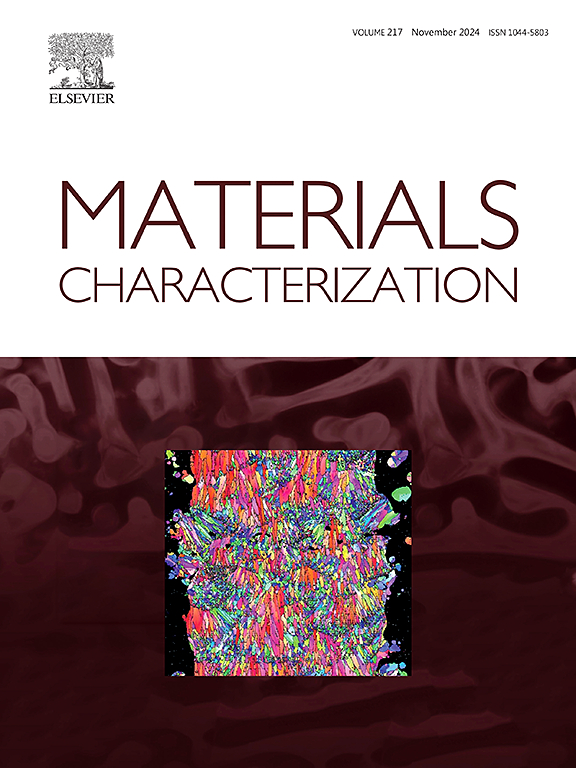Microstructure evolution and interfacial healing mechanism of heterogeneous interfaces in NiCo based superalloys during hot compression bonding
IF 4.8
2区 材料科学
Q1 MATERIALS SCIENCE, CHARACTERIZATION & TESTING
引用次数: 0
Abstract
This study focuses on the microstructural evolution of heterogeneous interfaces and healing mechanism of bonding interfaces of Ni![]() Co based superalloys during hot compression bonding. The coarse and fine grain sides show distinct refinement mechanisms during hot deformation. The coarse grain side refines the grains mainly through deformation twins and deformation microbands, and the residual primary γ' phase also facilitates the recrystallization through particle-stimulated nucleation mechanism. Continuous dynamic recrystallization through in-situ transformation of dislocation cells into high angle grain boundaries also contributes to the formation of necklace-like recrystallization on coarse grain side. The grains on the fine-grain side are further refined mainly by strain-induced discontinuous dynamic recrystallization. Dislocation density gradients induced by heterogeneous deformation drive migration of bonding interfaces across interfacial oxides from fine to coarse grain side during hot deformation. As the deformation strain increases, the migrating interfaces form the first layer of necklace-like recrystallization on coarse grain side due to deformation uncoordinated. Further increasing the deformation strain, the local deformation leads to continuous expansion of necklace-like recrystallized grains in deformed grains and refined recrystallized grains. The testing of mechanical properties indicate that the heterogeneous interface achieves complete healing, which provides a new idea for fabrication of dual microstructure turbine disks.
Co based superalloys during hot compression bonding. The coarse and fine grain sides show distinct refinement mechanisms during hot deformation. The coarse grain side refines the grains mainly through deformation twins and deformation microbands, and the residual primary γ' phase also facilitates the recrystallization through particle-stimulated nucleation mechanism. Continuous dynamic recrystallization through in-situ transformation of dislocation cells into high angle grain boundaries also contributes to the formation of necklace-like recrystallization on coarse grain side. The grains on the fine-grain side are further refined mainly by strain-induced discontinuous dynamic recrystallization. Dislocation density gradients induced by heterogeneous deformation drive migration of bonding interfaces across interfacial oxides from fine to coarse grain side during hot deformation. As the deformation strain increases, the migrating interfaces form the first layer of necklace-like recrystallization on coarse grain side due to deformation uncoordinated. Further increasing the deformation strain, the local deformation leads to continuous expansion of necklace-like recrystallized grains in deformed grains and refined recrystallized grains. The testing of mechanical properties indicate that the heterogeneous interface achieves complete healing, which provides a new idea for fabrication of dual microstructure turbine disks.

求助全文
约1分钟内获得全文
求助全文
来源期刊

Materials Characterization
工程技术-材料科学:表征与测试
CiteScore
7.60
自引率
8.50%
发文量
746
审稿时长
36 days
期刊介绍:
Materials Characterization features original articles and state-of-the-art reviews on theoretical and practical aspects of the structure and behaviour of materials.
The Journal focuses on all characterization techniques, including all forms of microscopy (light, electron, acoustic, etc.,) and analysis (especially microanalysis and surface analytical techniques). Developments in both this wide range of techniques and their application to the quantification of the microstructure of materials are essential facets of the Journal.
The Journal provides the Materials Scientist/Engineer with up-to-date information on many types of materials with an underlying theme of explaining the behavior of materials using novel approaches. Materials covered by the journal include:
Metals & Alloys
Ceramics
Nanomaterials
Biomedical materials
Optical materials
Composites
Natural Materials.
 求助内容:
求助内容: 应助结果提醒方式:
应助结果提醒方式:


